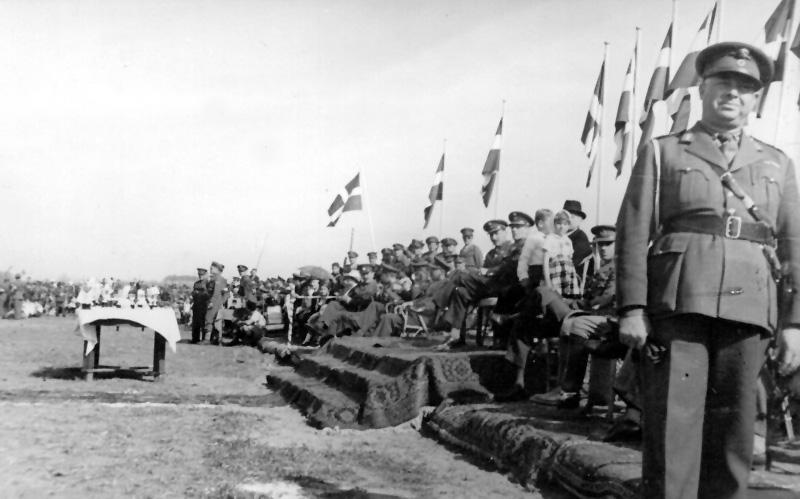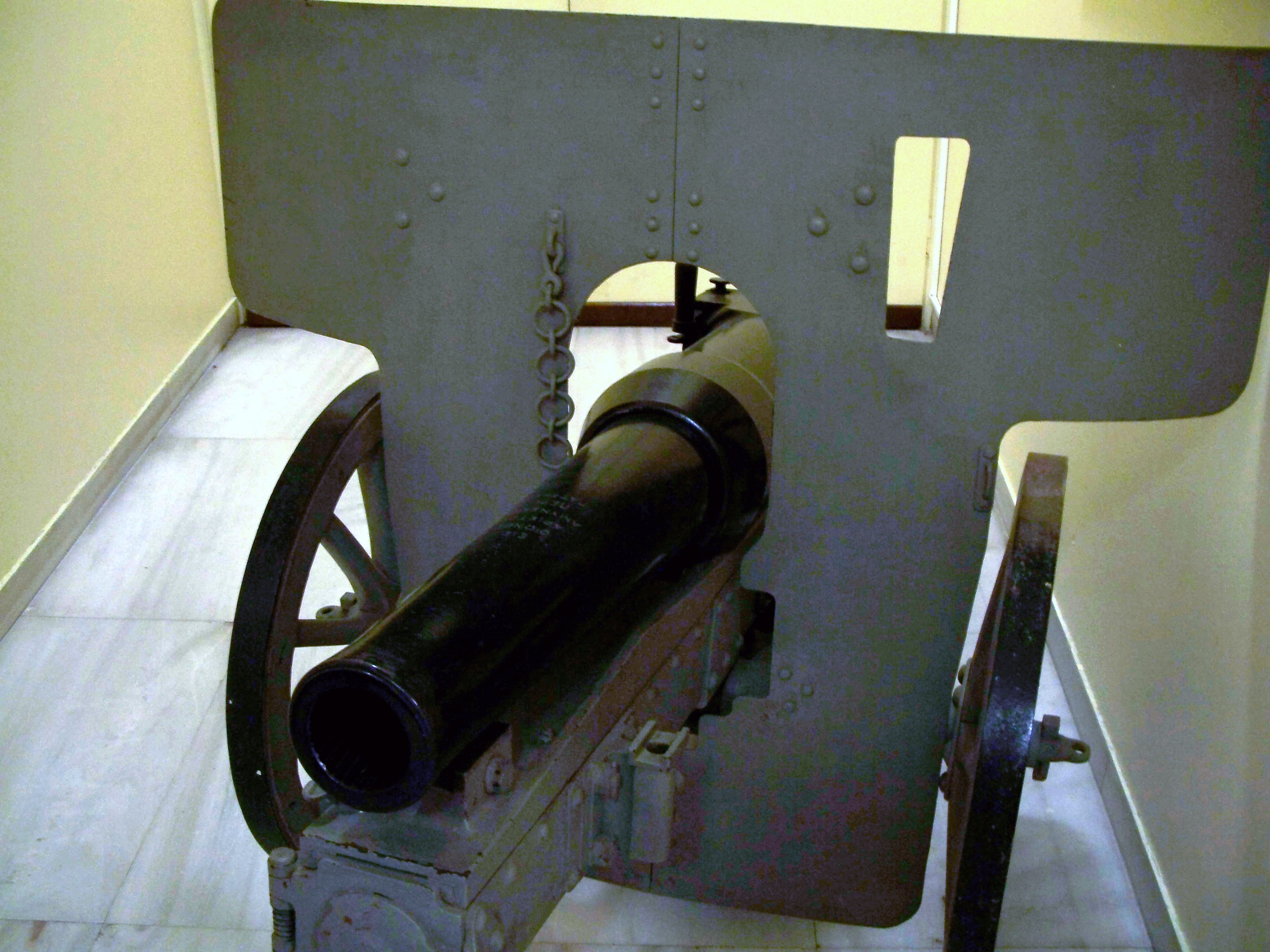|
Odysseas Angelis
Odysseas Angelis ( el, Οδυσσέας Αγγελής; 2 January 1912 – 22 March 1987) was a Greek military officer, who served as head of the Greek military during the Greek military junta of 1967–1974, and was selected by junta principal Georgios Papadopoulos as Vice President of the junta-proclaimed republic in 1973. He was deposed along with Papadopoulos by junta hardliners in November 1973, and sentenced to 20 years imprisonment for high treason in the Greek Junta Trials in 1975. Biography Early career Angelis was born in the village of Steni on the island of Euboea in 1912. After completing his studies at the Hellenic Army Academy, he was sworn in as an Artillery Second Lieutenant on 2 August 1934. Promoted to Lieutenant in 1937 and Captain in 1940, he participated in the Greco-Italian War as a mountain artillery battery commander. Following the German invasion and the Axis occupation of Greece, in 1943 Angelis fled the country and joined the Greek Armed Forces in t ... [...More Info...] [...Related Items...] OR: [Wikipedia] [Google] [Baidu] |
Vice President Of Greece
The vice president of Greece was a senior administration official during the republican phase of the Regime of the Colonels in 1973. After the coup d'état of 21 April 1967, the Hellenic Parliament was dissolved and the nation was ruled by a series of far-right military juntas for the next seven years. Colonel Georgios Papadopoulos, the self-appointed Regent of Greece, abolished the Greek monarchy in June 1973 and declared himself President. Along with the new office of president, the office of vice president was also established and General Odysseas Angelis, then Chief of the Armed Forces, was chosen to occupy the seat. After less than six months, the Papadopoulos regime was ousted by hardliner Brigadier Dimitrios Ioannidis, who installed General Phaedon Gizikis as the new (figurehead and not executive) president. The office of vice president, however, was abolished together with the 1973 Constitution following the regime change, and thus Angelis remains to date the only holder ... [...More Info...] [...Related Items...] OR: [Wikipedia] [Google] [Baidu] |
Supreme Military Command Of The Interior And Islands
The Supreme Military Command of the Interior and Islands ( el, Ανώτερη Στρατιωτική Διοίκηση Εσωτερικού και Νήσων, ΑΣΔΕΝ; ''Anóteri Stratiotikí Deíkisi Esoterikoú ke Níson'', ''ASDEN''), more commonly known as ASDEN, is a Corps-sized formation of the Hellenic Army responsible for the defence of the Aegean Islands. History Formed in Athens in 1945 as the Higher Military Command of Attica ( el, Ανωτέρα Στρατιωτική Διοίκηση Αττικής, ΑΣΔΑ; ''Anotéra Stratiotikí Deíkisi Attikís'', ''ASDA''), by 1961 it had evolved from a territorial defence force to a Corps-sized formation, overseeing the Aegean region's four National Guard Commands. It was soon renamed to the Supreme Military Command of the Interior and Islands ( el, Ανωτάτη Στρατιωτική Διοίκηση Εσωτερικού και Νήσων, ΑΣΔΕΝ; ''Anotati Stratiotikí Deíkisi Esoterikoú ke Níson'', ''ASDEN'') to r ... [...More Info...] [...Related Items...] OR: [Wikipedia] [Google] [Baidu] |
Greek Armed Forces In The Middle East
After the fall of Greece to the Axis powers in April–May 1941, elements of the Greek Armed Forces managed to escape to the British-controlled Middle East. There they were placed under the Greek government in exile, and continued the fight alongside the Allies until the liberation of Greece in October 1944. These are known in Greek history as the Greek Armed Forces in the Middle East (Ελληνικές Ένοπλες Δυνάμεις Μέσης Ανατολής). Army In the face of the overwhelming German advance into Greece, several thousand Greek officers and soldiers were either evacuated, along with the Greek government, to Crete and then Egypt, in April–May 1941, or managed to flee, mainly via neutral Turkey, to the British-controlled Middle East. There a Greek army in exile started being formed, under British command and re-equipped with British arms. The core of this new military force was the "Phalanx of Egyptiote Greeks", from the Greek community in Egypt. On 15 Ju ... [...More Info...] [...Related Items...] OR: [Wikipedia] [Google] [Baidu] |
Mountain Artillery
Mountain guns are artillery pieces designed for use in mountain warfare and areas where usual wheeled transport is not possible. They are generally capable of being taken apart to make smaller loads for transport by horses, humans, mules, tractors, or trucks. As such, they are sometimes called "pack guns" or "pack howitzers". During the American Civil War these small portable guns were widely used and were called "mountain howitzers". The first designs of modern breechloading mountain guns with recoil control and the capacity to be easily broken down and reassembled into highly efficient units were made by Greek army engineers P. Lykoudis and Panagiotis Danglis (after whom the Schneider-Danglis gun was named) in the 1890s. Mountain guns are similar to infantry support guns. They are largely outdated, their role being filled by howitzers, mortars, multiple rocket launchers, recoilless rifles and missiles. Most modern artillery is manufactured from light-weight materials and can ... [...More Info...] [...Related Items...] OR: [Wikipedia] [Google] [Baidu] |
Hellenic Army Academy
The Hellenic Army Academy ( el, Στρατιωτική Σχολή Ευελπίδων), commonly known as the Evelpidon, is a military academy. It is the Officer cadet school of the Greek Army and the oldest third-level educational institution in Greece. It was founded in 1828 in Nafplio by Ioannis Kapodistrias, the first governor of the modern Greek state. Overview The institution was created to provide officers for all the Arms of the Hellenic Army (Infantry, Armour, Artillery, Signals, Engineering, and Army Aviation), as well as some of the Corps (the Technical Corps, the Transport and Supply Corps, and the Ordnance Corps). By contrast, officers in the Legal Corps, the Medical Corps, the Finance Corps, and the Auditing Corps are graduates of the Corps Officers Military Academy (), with the exception of nurse officers in the Medical Corps, who are graduates of the Nurse Officer Academy (). The School also trains cadets on behalf of foreign allied countries. The origin of the de ... [...More Info...] [...Related Items...] OR: [Wikipedia] [Google] [Baidu] |
Steni, Euboea
Steni Dirfyos ( el, Στενή Δίρφυος) formerly Ano Steni is a Greek village in Euboea. It is nearly located the centre of Euboea, 30 km northeast of Chalcis. It is built at a height of 440 m. in the slopes of mount Dirfi, Dirfys. Steni is part of Dirfys-Messapia municipality and is the seat of Dirfys regional unit. Its population is 392 inhabitants according to 2011 census. History Steni is built in the late 18th century (at about in 1790) by inhabitants of village Skounteri (nowadays Pyrgos). During Ottoman Greece, Ottoman occupation Skounteri was the seat of the local Ottoman governor (Beis). Skounteri has almost been depopulated the next years. In the short distance from Steni is located a big steep rock that named Kleisoura. During Ottoman period this place was the refuge of local anti-Ottoman insurgents known as Klepht. After the Greek independence, Steni became the most important village of the mountainous central Euboea. The last years there was the seat of the ... [...More Info...] [...Related Items...] OR: [Wikipedia] [Google] [Baidu] |
Greek Junta Trials
The Greek junta trials ( el, Οι Δίκες της Χούντας translated as: The Τrials of the Junta) were the trials involving members of the military junta that ruled Greece from 21 April 1967 to 23 July 1974. These trials involved the instigators of the coup as well as other junta members of various ranks who took part in the events of the Athens Polytechnic uprising and in the torture of citizens. The military coup leaders were formally arrested during the ''metapolitefsi'' period that followed the junta, and in early August 1975 the government of Konstantinos Karamanlis brought charges of high treason and insurrection against Georgios Papadopoulos and other co- conspirators."The Colonels on Trial" '' |
High Treason
Treason is the crime of attacking a state authority to which one owes allegiance. This typically includes acts such as participating in a war against one's native country, attempting to overthrow its government, spying on its military, its diplomats, or its secret services for a hostile and foreign power, or attempting to kill its head of state. A person who commits treason is known in law as a traitor. Historically, in common law countries, treason also covered the murder of specific social superiors, such as the murder of a husband by his wife or that of a master by his servant. Treason (i.e. disloyalty) against one's monarch was known as ''high treason'' and treason against a lesser superior was ''petty treason''. As jurisdictions around the world abolished petty treason, "treason" came to refer to what was historically known as high treason. At times, the term ''traitor'' has been used as a political epithet, regardless of any verifiable treasonable action. In a civil war or ... [...More Info...] [...Related Items...] OR: [Wikipedia] [Google] [Baidu] |
Metapolitefsi
The Metapolitefsi ( el, Μεταπολίτευση, , " regime change") was a period in modern Greek history from the fall of the Ioaniddes military junta of 1973–74 to the transition period shortly after the 1974 legislative elections. The metapolitefsi was ignited by the liberalisation plan of military dictator Georgios Papadopoulos, which was opposed by prominent politicians such as Panagiotis Kanellopoulos and Stephanos Stephanopoulos, and halted by the massive Athens Polytechnic uprising against the military junta. The counter coup of Dimitrios Ioannides, and his coup d'etat against President of Cyprus Makarios III, which led to the Turkish invasion of Cyprus, brought the dictatorship down. The appointment of the interim "national unity government", led by former prime minister Konstantinos Karamanlis, saw Karamanlis legalise the Communist Party (KKE) and found the center-right but still parliamentary (non-military) New Democracy party, which won the elections of 197 ... [...More Info...] [...Related Items...] OR: [Wikipedia] [Google] [Baidu] |


